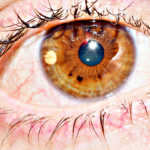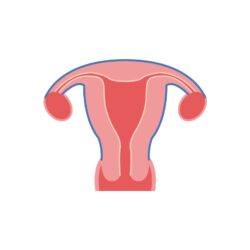Breakthrough Treatments for Childhood Heart Tumors Revealed
This article highlights recent advancements in the treatment of childhood heart tumors. It explores innovative therapies demonstrating promising results in clinical trials, providing more effective and less invasive solutions. The article emphasizes the importance of early detection, accurate diagnosis, and personalized treatment plans, while spotlighting cutting-edge diagnostic tools. It aims to offer valuable insights to medical practitioners, researchers, and affected families about the current landscape and future prospects of pediatric cardiac oncology.

Key Takeaways
- Childhood cardiac tumors can be benign or malignant, with a range of different types including rhabdomyoma, myxoma, teratomas, fibroma, histiocytoid cardiomyopathy tumor, hemangiomas, and neurofibroma.
- The most common benign tumors in newborns are teratomas.
- Malignant tumors are rare and include malignant teratoma, lymphoma, rhabdomyosarcoma, angiosarcoma, undifferentiated pleomorphic sarcoma, leiomyosarcoma, chondrosarcoma, synovial sarcoma, and infantile fibrosarcoma.
- Signs and symptoms of heart tumors can include changes in heart rhythm, trouble breathing, chest pain or tightness, coughing, fainting, dizziness, fast heart rate, swelling, anxiety, and stroke-like symptoms.
Understanding Childhood Cardiac Tumors
The comprehension of childhood cardiac tumors, a critical aspect of pediatric oncology, involves understanding their types, causes, symptoms, diagnostic methods, and potential treatment options. Genetic predisposition plays a substantial role in the prevalence of these tumors, with certain inherited conditions increasing the risk. Symptoms can range from minor discomfort to significant cardiac complications, necessitating prompt and accurate diagnosis through methods such as echocardiograms, CT scans, and MRIs. Treatment options vary based on the tumor type and patient's overall health but may include watchful waiting, surgery, chemotherapy, or radiation therapy. While these treatments can successfully manage the tumors, it's vital to consider the potential long-term effects on the child's health, including possible heart damage or risk of secondary cancers, underscoring the importance of regular post-treatment follow-ups.
Recognizing Signs and Symptoms of Heart Tumors in Children
Identifying early signs and symptoms of heart tumors in children is crucial in facilitating timely diagnosis and effective treatment. Early detection strategies for childhood heart tumors include regular monitoring of the child's heart rate and watching for changes in breathing patterns, chest pain, or unexplained fainting. Swelling, anxiety, and stroke-like symptoms may also indicate the presence of a heart tumor. Given the gravity of this condition, it is vitally important for parents to consult healthcare professionals if these symptoms appear. To aid in this process, several support and resources are available for families affected by childhood heart tumors, providing them with necessary information, guidance, and the emotional assistance they may require while navigating these challenging circumstances.
The Role of Diagnostic Tests in Identifying Heart Tumors
An accurate diagnosis of heart tumors in children largely hinges on the effective utilization of a range of diagnostic tests. Central to this process is the role of imaging techniques in diagnosing heart tumors. Advanced imaging modalities such as echocardiography, magnetic resonance imaging (MRI), and computed tomography (CT) scans have become essential tools in accurately identifying and characterizing these tumors. These techniques provide detailed images of the heart, enabling clinicians to determine the size, location, and nature of the tumor. The importance of early detection in childhood heart tumor cases cannot be overstated. Prompt and accurate diagnosis allows for the timely initiation of treatment, significantly improving the prognosis and enhancing the quality of life for these young patients.
Investigating Different Treatment Methods for Childhood Heart Tumors
How, in the realm of pediatric oncology, do medical professionals determine the most suitable treatment for childhood heart tumors, and what factors influence this crucial decision-making process? The answer lies in a multi-faceted approach, which considers the type, size, location of the tumor, and the child's general health. With advancements in targeted therapy, doctors can now zero in on the tumor's specific genes and proteins that contribute to its growth, minimizing the harm to healthy cells. Moreover, the role of immunotherapy, which empowers the body's immune system to fight cancer, is being increasingly recognized. These treatment methods, combined with traditional options like surgery, chemotherapy, and radiation, provide a comprehensive and personalized treatment plan, offering newfound hope to young patients and their families.
The Impact of Clinical Trials on Childhood Heart Tumor Treatments
Clinical trials have greatly influenced the development of new therapies for childhood heart tumors, and they have also significantly improved the overall survival rates and quality of life for these young patients. These trials have highlighted the benefits of early detection in childhood heart tumor cases, allowing for prompt, targeted treatment and better prognoses. The trials have also underscored the importance of multidisciplinary approaches in treating childhood heart tumors. By integrating expertise from various medical disciplines, these trials have facilitated the development of comprehensive treatment plans that address the unique needs of each patient. As a result, children with heart tumors are now benefiting from personalized treatments that enhance survival rates while minimizing potential health complications. Continued investment in clinical trials is vital in driving further advancements in this field.
Navigating the Landscape of Childhood Heart Tumor Clinical Trials
Understanding the complex landscape of clinical trials for childhood heart tumors is critical for parents and caregivers seeking the most advanced and appropriate treatment options for their children. An important aspect of this journey involves identifying risk factors for childhood heart tumors, which can guide treatment decisions and influence clinical trial selection. Clinical trials often offer innovative approaches not available in traditional care, thus exploring alternative treatment options for childhood heart tumors is fundamental. These trials, meticulously designed and regulated, can provide access to cutting-edge therapies, offering hope for better outcomes. However, it's essential to weigh potential benefits against risks. Consulting with healthcare professionals and utilizing resources from reputable health organizations can aid in comprehensively understanding and navigating this intricate domain.
Analyzing the Latest Breakthrough Treatments for Childhood Heart Tumors
Remarkably, recent advancements in the field of pediatric cardiology have resulted in a series of breakthrough treatments for childhood heart tumors, offering renewed hope for improved patient prognosis. The latest research showcases a range of novel therapies including advanced molecular therapeutics and minimally invasive surgical procedures designed to increase survival rates and reduce treatment-associated morbidity. These developments are primarily driven by our increasing understanding of the genomic and molecular underpinnings of these tumors. Furthermore, advancements in imaging techniques have drastically improved the early detection and accurate diagnosis of these conditions. Looking ahead, the ongoing research in this field holds promise for future advancements, potentially paving the way for personalized treatment approaches and improved long-term outcomes for patients.
Frequently Asked Questions
What Are the Long-Term Effects of Childhood Heart Tumors on Overall Health and Lifestyle?
Long-term effects of childhood heart tumors can significantly impact overall health and lifestyle. Survivors may experience physical challenges, including ongoing cardiac issues and the potential for secondary cancers. Emotional impacts such as anxiety and depression are also common. Survivorship care, including regular health check-ups, psychological support, and lifestyle modification, is crucial to monitor and manage these long-term effects and to enhance the quality of life for survivors.
Are There Any Preventative Measures That Can Be Taken to Decrease the Risk of Heart Tumors in Children?
Preventative measures for childhood heart tumors primarily focus on managing genetic influences and ensuring optimal prenatal care. Genetic counseling can identify potential risks and suggest strategies for mitigation. Prenatal care, including regular check-ups and screenings, can help detect any irregularities early. However, given the rarity and complex nature of heart tumors, prevention is challenging. Comprehensive medical care and a healthy lifestyle can contribute to overall heart health and potentially reduce risk.
How Frequently Should Children With a History of Heart Tumors Have Check-Ups With a Cardiologist?
Children with a history of heart tumors should have regular check-ups with a cardiologist, typically every 3-6 months. Frequency can depend on various factors including genetic influences and the nature of previous treatments, such as surgical advancements. The aim is to monitor heart health, manage ongoing treatment effects, and ensure early detection of any recurrence. Regular follow-ups are essential for optimal long-term outcomes. Always consult the child's healthcare provider for personalized advice.
What Specific Support Groups or Resources Are Available for Families Dealing With a Child’s Heart Tumor Diagnosis?
Several resources are available to support families navigating a child's heart tumor diagnosis. Organizations like the American Heart Association provide guidance in navigating the healthcare system. The Children's Cardiomyopathy Foundation offers emotional coping strategies and support groups for families. Online platforms like CaringBridge also allow families to share updates and receive emotional support. Additionally, local hospitals often have social workers who can recommend community resources.
Can Lifestyle Changes or Alternative Therapies Play Any Role in the Treatment or Management of Childhood Heart Tumors?
Alternative therapies and lifestyle changes can complement traditional treatments for childhood heart tumors, although their impact varies. In the context of Alternative Therapies Evaluation, these may include yoga, meditation, or acupuncture to improve overall well-being. Meanwhile, a Lifestyle Impact Assessment may focus on maintaining a balanced diet and regular exercise to optimize health. However, it's crucial these approaches are discussed with healthcare professionals to ensure they align with the child's primary treatment plan.
Conclusion
In conclusion, medical advancements are revolutionizing the treatment for childhood heart tumors. Innovative therapies, early detection, accurate diagnosis, and personalized treatment plans play crucial roles. Groundbreaking diagnostic tools and techniques contribute significantly to the prognosis and quality of life for young patients. Continuous research and clinical trials promise further advancements, marking a new era in pediatric cardiac oncology. The information provided herein proves valuable for medical practitioners, researchers, and families impacted by childhood heart tumors.

This post has been generated by AI and was not reviewed by editors. This is Not legal advice. Please consult with an attorney.




